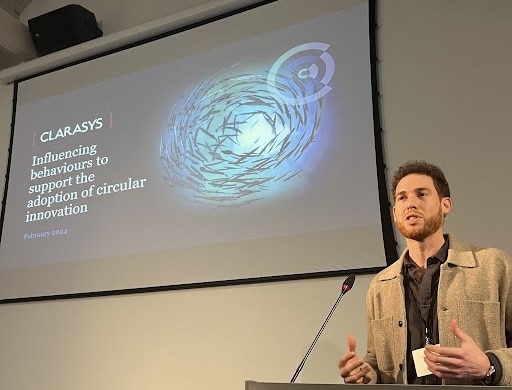In the first of 2 blogs we look at the importance of ensuring your sustainability values flow through your end-to-end supply chain.
Step 1 in making sure your suppliers mirror your sustainability values
Step 1 in making sure your suppliers mirror your sustainability values
In the first of 2 blogs we look at the importance of ensuring your sustainability values flow through your end-to-end supply chain.

Meet the author
At Clarasys, we firmly believe that we all should be doing our bit to build a more sustainable world. That’s why we’re working towards our B Corp and living wage accreditations and have been carbon neutral since 2021 with an ambition to set a rapid decarbonisation approach in the near future.
But what about larger organisations and companies that outsource their services to suppliers? Their sustainability effort is only as good as the extent to which the suppliers they utilise share the same sustainability values. This is a challenge typically encountered in global or Government clients who rely on suppliers and contractors for wide-scale delivery
Undoubtedly, it can be a bit of a minefield, with the seemingly constant doom and gloom articles and often a lack of practical actions that can be done “on the ground” to help. It can be overwhelming and hard to know what to do and where to start, especially when you not only have to factor in your own organisation but that of your suppliers!
But as the saying goes, every little helps and that’s why adopting an agile approach to kick-starting your sustainability agenda is the most effective and efficient way to help take quick and focused action.
The first step? Well it sounds obvious but developing a clear understanding of where your business/ department currently sits from a sustainability perspective is the first thing you should be focusing on.
This baseline assessment can be relatively easily done by working with stakeholders across your organisation to gather data inputs and understand the impact your organisation has on society, the economy and the planet. An example of this might be quantifying your organisational waste generated if you are managing a product or service, or understanding wage disparity across your supply chain. At Clarasys, we’ve created a Baseline Impact Assessment tool which uses the inputs from leading sustainability frameworks to easily give a single sustainability and social value score across all sustainability and social value areas. This has been utilised within a government department to encourage and inform sustainability aspects of the procurement of a major service.
Once your organisation or department has a view on the current state you can then turn your attention to prioritising areas to focus on. Invite your leading stakeholders, including your customers in some cases, to review your organisation’s baseline assessment outcome and work with them to agree on the “material areas” for that department – essentially what is most important for you to address. This could be based on areas where your department or organisation is particularly weak or where there are opportunities readily available or apparent to make quick, sizeable wins. Within the Government or local authorities, we often see the material areas mirroring those high on the overall sustainability agenda.
Once you have this, everything else can follow. You can articulate your sustainability vision, identify your objectives and create a roadmap of sustainability interventions. This can then be shared with your supply chain where you should challenge and incentivise them to work towards the same sustainability targets as you. That being said, it doesn’t all have to be driven by you. By showing your commitment to, and priorities for, sustainability, you should actively challenge your suppliers to be innovative and collaborative with you to help identify other opportunities to become more sustainable together.

